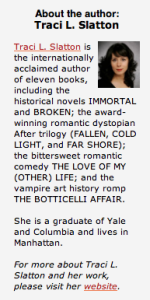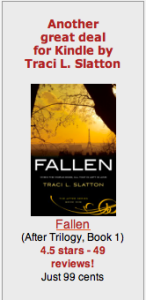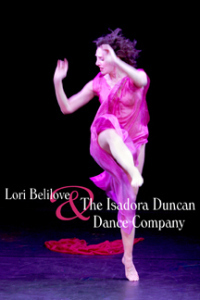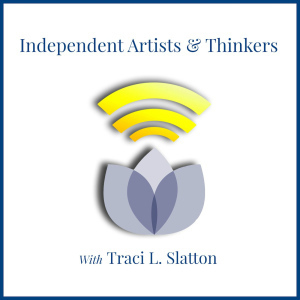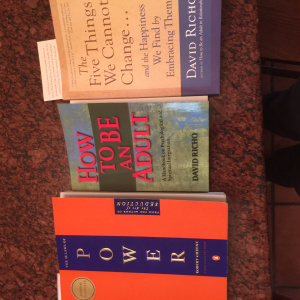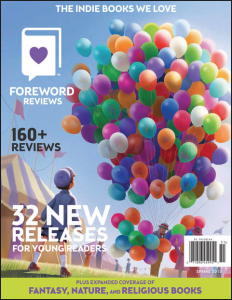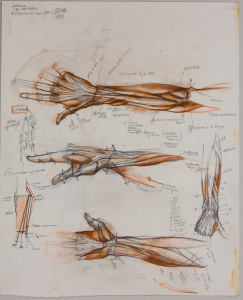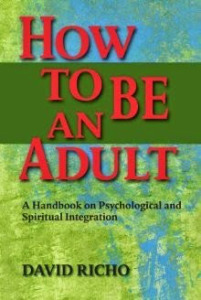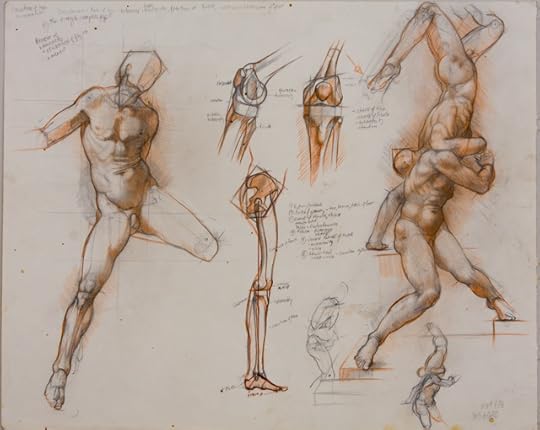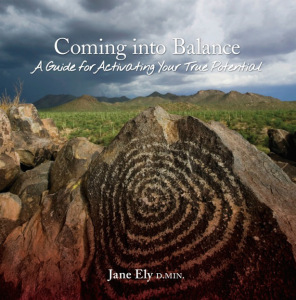Traci L. Slatton's Blog, page 9
April 22, 2015
The Never Ending Journey of the Independent Artist, My Latest on the HuffPo
I am an independent artist, married to an independent artist, with friends who are, yes, independent artists. This piece on the Huffington Post reflects what I’ve learned.
In part, the article says:
What I experienced was that the big traditional publishing companies had gotten mired in the quicksand of conventional thinking and groupthink. They had forgotten the importance of nurturing a midlist author through a few books to build a readership. They overlooked the appeal of richness and diversity in a book list and so refused to invest in truly original, unorthodox projects.
Worst of all, they had taken the selection of books away from people who love books—editors—and turned it over to people desperately searching for a business school algorithm to make every book a bestseller out of the starting gate—the marketing department.
Not that some wonderful books don’t sneak past the eyes of the marketing department. But, increasingly, legacy publishers emulate corporate Hollywood studios: turning out branded, franchise entertainment, mindless drivel that appeals to the horny, nerdy teenager in us all.
The great books and movies that make it past gatekeepers usually do so because they are spearheaded by someone passionate about the project. These projects come from the creative heart and soul of a dedicated individual. They require perseverance and vision in order to unfold in the world.
With no luck but bad luck with the legacy publishers, I embarked on my own passion process. I founded Parvati Press. I started independently publishing my own books and recently other authors.
I’m fortunate to have two strong-minded individualists in my life as models for my journey: my husband Sabin Howard, and my friend dancer Lori Belilove, Founder and Artistic Director of the Isadora Duncan Dance Company and Foundation.
Catch the whole article here on the HuffPo.
Though I did realize this morning that there is one thing I forgot to mention explicitly in the post: the pleasure inherent in this path. It’s just fun to think ‘outside the box’ and to operate outside the confines of corporate mentality. It’s scary, yes, because it’s insecure. But it is ever so delicious.
The post The Never Ending Journey of the Independent Artist, My Latest on the HuffPo appeared first on In the mouth of the serpent.
April 21, 2015
BROKEN on SALE via BookGorilla promotions
FOR A LIMITED TIME, Traci L. Slatton’s BROKEN on sale for $0.99!!
Get while it’s hot!

Free Kindle Nation Shorts
a free reader’s service from Kindle Nation Daily
April 21, 2015
An excerpt from Traci L. Slatton’s BROKEN
Paris, 1939-1942. A fallen angel who has taken the form of a beautiful woman is trapped in the web of Nazi occupation. Can she save her two lovers and the Jewish widow and child she has come to care for?
“…incredible…a beautiful, heart-wrenching tale of love, loyalty, betrayal, and defiance…”
Sensual, spiritual and elegantly written, BROKEN is enthralling readers…
“…stunning. It’s unlike anything I’ve ever read..”
Experience BROKEN while it’s 83% off the regular price!
Alia takes full advantage of her human form
in this Free Kindle Nation Shorts excerpt from
Broken
by Traci L. Slatton
4.5 stars – 13 reviews
Special Kindle Price: 99 cents!
(reduced from $5.99 for a
limited time time only)
Here’s the set-up:
Power is pornographic. Can love sustain light when the forces of evil close in?
Paris, 1939-1942. A fallen angel is trapped in the web of German occupation. The deadly noose of Nazi control grows ever tighter, ensnaring her and two of her lovers, a bullfighter and a musician working in the fledgling Resistance. Can she save them and the Jewish widow and her child that she has come to love, or will betrayal take them all?
5-star praise for BROKEN:
“…a wonderful escape….exciting, intelligent…captivating…”
“Compelling and transporting…”
The post BROKEN on SALE via BookGorilla promotions appeared first on In the mouth of the serpent.
April 14, 2015
Independent Artists & Thinkers, a BlogtalkRadio show
I’m launching a BlogTalkRadio show. I’ve created the “Independent Artists & Thinkers” show and our first show airs Thursday, April 16 at 1 pm EDT. I’ll be interviewing dancer and Artistic Director Lori Belilove, founder of the Isadora Duncan Company and Foundation.
This internet radio show is focused on one of my personal passions: the journey of the independent artist, who creates and sustains art outside the structure of the big studios, publishing companies, and galleries.
It’s my belief that the most interesting, creative, and original voices today are heard outside of the big corporations, studios, and galleries. Individuals of courage and inspiration are seizing the opportunities to create and promote their art themselves. I intend to support them and to bring their stories to you–to the world.
On this premiere show, I’ll interview independent artists of all kinds, unusual thinkers, and healers about their process. How do they do it? How do they start with an idea and bring it to life in the world? This show intends to illuminate the journey. Feel free to call in to 516 453 6052 with questions, or livechat with me at blogtalkradio.com/independentartiststhinkers
On this first episode, we’ll ask: What does it take to found and sustain an artistic institution? Lori Belilove has some ideas to share with us.
Lori Belilove is recognized around the world as the premier interpreter and ambassador of the dance of Isadora Duncan. She’s sought after as a unique contemporary artist who understands the essence of Isadora. Known as a solo dance artist for her interpretations of Duncan’s signature solos and staging of Duncan’s group masterpieces, she has also been recognized for creating powerful, contemporary works in her own voice. The purity, timelessness, authentic phrasing, and musicality of Duncan dance has been passed down to Lori through a direct line of Isadora Duncan dancers.
Lori is also a choreographer and the Artistic Director of The Isadora Duncan Dance Company. The company performs regularly and increasingly garners invitations to perform around the world. Lori herself is a dynamo as well as a dancer of supreme grace and appeal.
I’m excited about this new endeavor, and I hope my readers will tune in, either live or via archive. If you’re listening live, then, please, phone in! I’d love to hear from you. Consider this an invitation!
Independent Artists & Thinkers
The post Independent Artists & Thinkers, a BlogtalkRadio show appeared first on In the mouth of the serpent.
April 8, 2015
How to Be An Adult; Assholes: A theory; and Laws of Power
Three books: David Richo’s, Aaron James’, and Robert Greene’s.
I’ve been played by a few people over the last year and a half. One was someone with whom I’d had a peripheral acquaintance in grad school, who turned out to be a deranged psycho; one was a writer who wanted free editing and solicitous hand-holding so he could shop his novel to big publishers; and one was someone in the helping professions, who indulged himself at my expense. The last one should have known better.
After the fiasco with the writer–I spent Parvati Press funds on editing his manuscript–I woke up.
I realized that I have to be more careful. I have to be more discerning. Even if I intend to be a trustworthy person of integrity, I must accept that not everyone holds that same intention. There are people out there who just want to get what they can, and they don’t care how they do it or who they take advantage of in the process; people who indulge their own neediness and look for gratification without considering the impact on other people; and people who are just plain bat-crap crazy. Those latter folk can never be trusted.
Then there are people like me who do their best and still sometimes screw up, because everyone screws up, that’s human life. I need to know which group individuals belong to.
Given the vengefulness and malice my mother and former husband subjected me to over the years, I should have learned this lesson long, long, long ago. But that’s part of the problem with having the kind of early life I did, with unkind, untrustworthy parents. I have a giant blind spot when it comes to ferreting out the assholes.
So I did what I usually do, when confronted with a subject I want to learn: I turned to books. Hence the titles above.
Richo is a Jungian psychotherapist and prolific author. I own several of his books, including How to be an adult and The Five Things We Can Not Change. His work would have found its way into my hands sooner or later. He writes for people on the growth path, people who care about their evolution as human beings and who understand that psychological work necessarily carries a spiritual dimension. His work is about becoming a mature individual of integrity. It is about the practice of mindful loving-kindness as a way both to heal the past with its wounds and to identify your own transference. It is about the self-responsibility that leads to transformation and, ultimately, to waking up.
I’m glad I started with Richo. His work affirms my desire for, and intention toward, integrity, wholeness, and mindful loving-kindness. There’s a balance between Richo’s mindful higher self and the self-absorbed lower self of which James and Greene write; I now accept that I have to understand the lower self so that I can spot it when it acts out. Especially when it acts out in my direction.
James’ book Assholes: A Theory holds a neutrality I find fascinating. He describes a species of narcissist, examining their behavior, cultural origins, and impact with the same dispassion with which he’d treat a marsupial. It’s good, useful information–despite the title. I mean, I get why he uses that specific title, Assholes, despite how provocative that word is.
For anyone who has to deal with these entitled people, this book is worth reading.
Greene’s book The 48 Laws of Power is an outright appeal to the greedy, amoral, solely self-interested lower self, to the id, and basically to everything slimy within us that wants to control and manipulate other people. He’s saying boldly, “Here’s how to do it skillfully.”
I’m reading this book so I can suss it out when these tactics are being used on me. To be sure, I’m reading the book with as much disgust as interest. Greene foists some specious reasoning as to why it’s okay and even laudable to use his techniques, but it’s easy to see through the lame rhetoric of his justification.
In some ways, Greene has done me a service, by putting it down in black-and-white. His book will help me guard myself with more wisdom. Plenty of people use his tactics. Hopefully I can steer clear of them in the future. If I have to deal with those sorts, I will know their story. Forewarned is forearmed.
The contrast between Greene’s work and Richo’s work is shocking. Greene writes about power and greed and achieving the selfish ends of those; his work aggrandizes the ego. It goes toward materialism and consumerism–in healerspeak, the lower three chakras.
Richo’s work stands in startling contrast. It’s about the heart and spirit, integrating the shadow, opening the heart, and the personal responsibility and accountability inherent in spiritual and psychological integration.
The lower self vs. the higher self.
For example, Greene says, “Never put too much trust in friends” and Richo writes that everyone fails at times, so work on becoming a trustworthy person yourself. Greene writes, “Crush your enemy totally” and Richo writes “our psychological work…challenges us not to retaliate against those who have hurt us…The challenge is to meet our losses with lovingkindness.”
The question is, what kind of person do I want to be?
And even with a clear intention to be the absolute best Traci I can be, how do I achieve that intention?
Richo has an answer, I think. He suggests a few questions, when we’re facing troublesome situations with other people: 1, What in this is my own shadow? 2, What is my ego’s investment? and 3, How does this remind me of the past, that is, what is my transference?
So a shrink who holds sexual energy toward me is reflecting my own unacknowledged seductiveness. My ego wants to be special, to the shrink and to everyone. The transference is twofold: I try to please him by reciprocating his energy in order to elicit the “good daddy” I always longed for, and his refusal to validate me about the sexual energy he held toward me reflects my parents’ constant refusal to validate me ever about anything.
This experience disappointed me in myself. I should have known better. For one, every shrink I know socially is a complete nutter. For two, several of my friends grew alarmed at some of the shrink’s statements to me. One friend, a counseling MD with a degree in psychology, sat me down and explained how some of his comments contained hooks that were designed to lure me in. Another friend who is a PhD and a trained lay analyst looked at his texts and said, “Traci, this is seductive. Stop going to therapy.”
So why, with that kind of validation from my friends, did I still want this shrink to validate my experience, when he was clearly never going to own his own psychosexual countertransference?–Well, that’s the thing. Transference is a bitch. And it has us in its talons until we shake ourselves free.
This is just one example. It’s imperative that I see the tactics being used on me.
Richo insists that we must never give up hope in other people. He claims that everyone can have a change of heart and redeem themselves. And I like this aspect of his work, too, because even in bad experiences with other people, I’ve gained something positive and worthwhile. My mother gave me life. My ex-husband taught me about the person I don’t want to be and how essential respect is to me. The shrink helped enormously in several areas of my life. The arrogant writer showed me that I like helping other people on their journey to becoming authors.
The psycho, well, that’s harder to find the good. I wrote a Huffington Post article about it and received many warm accolades from people for sharing information on how to deal with harassment.
Gratitude is part of it, too.
The post How to Be An Adult; Assholes: A theory; and Laws of Power appeared first on In the mouth of the serpent.
March 10, 2015
From the HuffPo: Three Plot Structures Every Storyteller Can Use
Here is my latest Huffington Post article: Three Plot Structures Every Storyteller Can Use
I have a theory that novelists are fugitives from simple existence. We metabolize, mediate, and render life rather than simply experiencing it. We live through an incident and wonder, with tears glossing our eyes or bliss pinking our cheeks or ennui prompting a yawn, “How can I use this in a story?” A novelist’s mindfulness consists of pouncing on a moment as a resource for a character, or as a turn in the road on the journey of story, or as an illustration for a thesis.
Henry James wrote, “The novelist is a particular window, absolutely — and of worth in so far as he is one; and it’s because you open so well and are hung so close over the street that I could hang out of it all day long.” (James, Henry, and James E. Miller. Theory of Fiction: Henry James. Lincoln: U of Nebraska, 1972. Print. Pp. 65-66.) Opening for others to peer through and take delight in an unfolding scene is a practice and a process; it takes time and commitment. It’s not enough to over-analyze your own interiors.
What I’m really talking about, with James’ metaphor, is the skill required to craft a novel that engages and delights readers. I think it requires persistence to the point of obsession. Fortunately, along the way there are tools that help us learn.
One of those tools is plot structure. Plenty of authors take a dim view of plot and subordinate it to story (See Stephen King’s On Writing: A Memoir of the Craft). I appreciate their point. For myself, I’ve defined ‘story’ as ‘how your protagonist does not get what he or she wants’ and that reigns supreme in my consciousness while I write. However, plot structures are handy aides in the pursuit of thwarting, frustrating, and torturing your protagonist, like training wheels for learning to ride a bike. You won’t keep them on forever, but they’ll give you some support as you go.
Here are three useful plot structures for every storyteller to have in her toolbox. Remember, these structures are really scaffolds. It’s the minutiae of adventure and dialogue and characterization that matter — otherwise reading the Cliff Notes would be just as much fun as the actual novel—which must never be the case.
READ THE ENTIRE ARTICLE HERE.
The post From the HuffPo: Three Plot Structures Every Storyteller Can Use appeared first on In the mouth of the serpent.
March 5, 2015
Foreword Reviews Spring Issue: Broken is “beautiful”
Foreword Reviews is the “library journal” of independent publishing. It’s a content-rich, beautifully put together magazine that’s published quarterly. The top of their Spring 2015 issue is emblazoned, “THE INDIE BOOKS WE LOVE” and this periodical means just that: they love indie titles. Foreword Reviews understands the value of independently published books and appreciates the quality of those independently published books with excellent production values.
It was with great delight that I received word, some months back, that my novel BROKEN would be reviewed and featured in Foreword Reviews. Not only that, but the editorial director politely wondered whether or not it was possible to get a jpg of the cover image, the painting upon which the cover is based.
In fact, Broken’s gorgeous cover is based on a painting by the extraordinarily gifted Roberto Ferri, an Italian figurative painter, and a hero of mine. Roberto’s work is utterly ravishing.
After a Skype session in Italian with my husband Sabin Howard (for whom Italian is his first language), Roberto graciously gave permission for me to use the painting for the book cover. He sent me a large file.
It was the one and only Gwyn Snyder who took that file and turned it into the book cover. And what a beautiful job Gwyn did! She’s so very talented.
So I happily asked Sabin to check with Roberto regarding Foreword Reviews featuring his painting, and he, again, generously gave permission.
The review of Broken is absolutely lovely. There’s a pix below. Allyce Amidon writes,
Slatton has created a beautiful, heart wrenching tale of humanity during the Second World War. …Slatton writes poignantly, with lyrical prose: “I have been shattered, the shattering is still with me. I am only shards now. There is no core.” This is a gorgeous philosophical treaty on right and wrong, the “why” behind impossible decisions, and what remains when everything is gone. Slatton guides the reader gently through to the end, all the more heartbreaking for its inevitability, imparting powerful, resonant themes as she goes.
Take a look online, and do consider a subscription!
The post Foreword Reviews Spring Issue: Broken is “beautiful” appeared first on In the mouth of the serpent.
March 4, 2015
Sabin Howard Interview: Dialogues on the Drawing Book 2
Sabin Howard Interview: Dialogues on the Drawing Book 2 is the second in a series of podcast/Youtube presentations.
My husband master sculptor Sabin Howard is working on a drawing book. This book will be entitled “Drawing: The Foundation of Art.” It’s really about the importance and value of drawing in the creation of art, and how drawing is a skill based on seeing.
This is an interesting interview, because it begins and ends with the personal, human viewpoint of the artist. In our first interview, Sabin discussed two elements in the making of art: the conceptual and the perceptual. In this dialogue, he explains the kind of art he is talking about: timeless art. He also talks about how he arrived at this kind of art, and mentions an awakening he experienced at the Medici Tombs in Florence when he was 14. He saw Michelangelo’s sculptures set into the architecture of the tomb and it elevated him.
Sabin relates the story of how he decided to become an artist. It happened one day, after he’d dropped out of college and was working in a woodworking shop in Philly. He spent a few days sweeping wood shavings and sanding wood and he realized that he wasn’t using his brain. He went to tell his boss that it wasn’t working out for him and he quit. He walked out of the shop and phoned his father–collect. When his dad picked up, Sabin said, “I’m going to go to art school.”
His dad asked, “How long is this going to last?” Then his dad hung up.
I don’t blame his dad, Sabin can be pretty frustrating. The irony is, of course, that art has lasted a lifetime–and since Sabin sculpts in clay and casts in bronze, his sculptures will last for millennia.
So take a listen or a look at the interview. And check out my podcast channel on iTunes, because the Dialogue will go live on it.
Listen here:
http://tracilslatton.com/http://tracilslatton.com/sabindialogue2.mp3
Or watch on youtube:
The post Sabin Howard Interview: Dialogues on the Drawing Book 2 appeared first on In the mouth of the serpent.
February 18, 2015
Maturing Whole: The beautiful books of David Richo (from the HuffPo)
Years ago, while running an errand, I encountered a woman on the sidewalk whom I know. She and I each have reason to feel disgruntled with the other. When I glanced at her, I saw that she was, literally, shaking with rage. Her features were twisted and reddened with hate. Rage radiated out from her in palpable, caustic waves.
For whatever reason—not because I’m enlightened—her radioactivity didn’t scorch me. She was spitting mad and didn’t bother to hide it because she wanted me to feel it, but I witnessed it without taking it on. It’s something I’m usually not good at. But on that extraordinary day, I simply observed. I thought, “So that’s why all the spiritual teachers say to forgive. She’s suffering more from her hate than I am.”
It was an epiphany for me, who lives, imperfectly, a life seeking awakening. Looking at that woman, and feeling sorry for her, filled my mind with the keen understanding that there must be a better way. I even longed for it.
And what is the elusive better way? It must have something to do with maturity. That is, with mature compassion for self and for others, and with the realization that vengefulness is a blade that cuts two ways….
…
Healing is possible, growth is possible and wholeness and maturity are possible for those of us who want to be our best selves. We don’t have to live steeped in the poison of our early programming and the way it plays out currently in our lives.
David Richo’s books are field guides for the journey. Richo, whom I have never met, is a psychotherapist, teacher, and workshop leader in California. His website says he “combines Jungian, poetic, and mythic perspectives in his work with the intention of integrating the psychological and the spiritual. His books and workshops include attention to Buddhist practices.”
READ THE FULL ARTICLE HERE.
The post Maturing Whole: The beautiful books of David Richo (from the HuffPo) appeared first on In the mouth of the serpent.
February 16, 2015
Sabin Howard Interview about His Drawing Book
My husband Sabin Howard is a master sculptor. He’s currently working on a book called Drawing: The Foundation of Art. The drawing book is a kind of follow-up to our book The Art of Life, which was a photo-rich survey of figurative sculpture through the ages, from the very earliest times through the Renaissance and the Neo-classical periods until his work now.
Sabin is an exceptional draughtsman. With awe–because I know I could never do what he does–I watch him draw. He sits at our dining room table and focuses so fiercely that he doesn’t hear the rowdy dogs and rambunctious kid, the cell phone ringing and the front door banging open. He pours himself into his vision and his skilled hands with such intensity that it all fades away from him.
He knows what he’s doing, too. One of the things I find so fascinating about my husband is that he’s extraordinarily articulate about his work. Also about art in general. He tends to be quiet and soft-spoken until he launches into a discourse about art, both its history and its theory.
We talk about art all the time, and I think that’s one of the best things about being married to Sabin: our conversations about art. It’s these very conversations that led to our book The Art of Life, because he was speaking one day about his approach to sculpture and I said, “Sabin, people need know what you’re up to. It’s important.”
So now Sabin Howard is up to a book on drawing. The book is about how drawing is the basis of visual art. He has a lot of cool stuff to say about that, and I cajoled him into doing an interview with me for my iTunes podcast channel. He talks about the perceptual and the conceptual parts of doing art, and about the three great masters whom art students should study: Leonardo, Michelangelo, and Raphael.
Listen here to the Sabin Howard interview or on my podcast channel.
http://tracilslatton.com/sabindrawingbookinterview.mp3
The post Sabin Howard Interview about His Drawing Book appeared first on In the mouth of the serpent.
February 12, 2015
Dr. Jane Ely Guest Post: Coming into Balance book
This is a guest post by healer and author DR. JANE ELY on the publication of her book COMING INTO BALANCE by Parvati Press.
***
In my first book, Remembering the Ancestral Soul: Soul Loss and Recovery, I addressed the global epidemic of soul loss, defining it and interviewing elders who shared wisdom and insights. My new book, Coming into Balance: A Guide for Activating Your True Potential picks up the theme of soul loss bringing tangible skills for soul retrieval through recovering our true self by activating transformational change from the inside out. I wrote this book to provide a tool kit for personal transformation that is accessible for everyone. I am passionate about the subject because I practice the skills in the book everyday and I know they work.
One of the basic premises of Coming into Balance is that we are all responsible to change that which is out of alignment within us. The first act of self-responsibility arrives when we become aware of being uncomfortable or in pain, then move internally toward it exploring the deeper meaning of what is arising. External discomfort always relates to what is being activated internally and is a catalyst that opens opportunity for deep shifts and realignment within. Another principle of the book equally important is that when one person cleans up their debris it affects the whole—the entire collective consciousness of the planet moves forward with more light and clarity. I introduce the concept of ecopsychology in the form of a universally recognized mandala known as the Medicine Wheel. The Medicine Wheel is a spiritual mandala found in many cultures most notably Native American Indian, Tibetan, Mayan, Celtic, Hindu to name only a few. The Wheel of Life reconnects us with the inherent, powerful intuitive sensate experiences of our body, mind, heart and spirit. We learn to activate the ‘insightful healer within’ which leads to self-discovery and a keener sense of awakened consciousness. The ancient wheel of spiritual evolution has four principles: Trust, Truth, Discernment and Faith, each direction of the Medicine Wheel reconnects us with a healing medicine. Using the Medicine Wheel as a template, we learn how to access our empowered higher self, connected to the soul agreements we made in our Life Between Lives. We get free from old “story” that keeps us stuck in the past to go beyond it into a state of awakened freedom. We find and activate the spiritual birthright or blueprint we have come here to live. We do this by practicing what I call ‘skillful means’ which are tools that change how we think, feel and act on a daily basis.
Ecopsychology is the practice of soul healing and of growing the soul to your next level of consciousness. Eco means the environment in which we are living, our internal and external ecology. Psycho means the soul in Greek. Ology means the study of and practice of learning. All together, ecopsychology is the daily practice of conscious soul evolution. Within the book skills, insight questions, exercises and graphics support you as you take the journey of self-awareness and transformation.
–Dr. Jane Ely
The post Dr. Jane Ely Guest Post: Coming into Balance book appeared first on In the mouth of the serpent.



